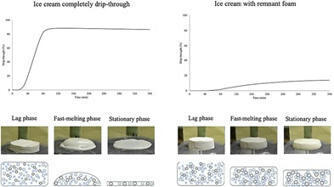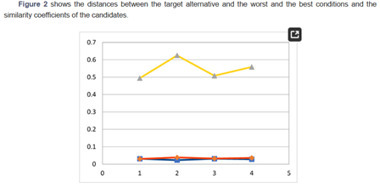 Your new post is loading...

|
Scooped by
Pôle Veille AgroParisTech
September 9, 5:37 AM
|
Veille IPCI : Ingénierie de Produits à l'interface Cuisine-industrie

|
Scooped by
Pôle Veille AgroParisTech
October 29, 6:32 AM
|
Sweetener innovation is evolving as formulators converge science and sensory design to reshape how sweetness is developed across F&B categories. Reducing sugar is more important than ever for health-conscious consumers, but R&D efforts involve much more than simply swapping one ingredient for another.

|
Scooped by
Pôle Veille AgroParisTech
October 29, 6:27 AM
|
Les produits laitiers, céréaliers ou encore les boissons s’enrichissent de protéines, vitamines, collagène ou fibres pour apporter plus de bienfaits, tandis que les compléments alimentaires sont en pleine forme. Une tendance de fond en réponse aux attentes de bien-être des Français, qui dope les ventes de nombreuses catégories et dessine de nouvelles pistes pour l’alimentation de demain.

|
Scooped by
Pôle Veille AgroParisTech
October 29, 6:17 AM
|
This review highlights the transformative potential of fermentation in seaweed processing and recommends future research focusing on standardization, sensory analytics, and pilot-scale production to support the integration of fermented seaweed into mainstream food applications.

|
Scooped by
Pôle Veille AgroParisTech
October 29, 6:08 AM
|
Artificial Intelligence in Food Science: Transforming Food and Bioprocess Development covers the AI and machine learning techniques that are reshaping the food science landscape, introducing innovative solutions to improve food processing, safety, and sustainability.

|
Scooped by
Pôle Veille AgroParisTech
October 29, 6:04 AM
|
Enzymes are protein-based biocatalysts that speed up biochemical reactions without affecting equilibrium, with microbial sources being the most efficient and cost-effective for large-scale production. Their dual roles as processing aids and inhibitors of spoilage make understanding their structure, function, and specific activity vital for both in vitro applications and food product development.

|
Scooped by
Pôle Veille AgroParisTech
October 29, 5:56 AM
|
This review aims to evaluate how the application of advanced fermentation techniques can transform the food production system to be more effective, nutritious, and environmentally friendly. The techniques discussed include metabolic engineering, synthetic biology, AI-driven fermentation, quorum sensing regulation, and high-pressure processing, with an emphasis on their ability to enhance microbial activity with a view to enhancing product output.

|
Scooped by
Pôle Veille AgroParisTech
October 29, 5:50 AM
|
This review focuses on the nutritional value of edible insects, cooking methods, and current applications of edible insect-based foods, aiming to help consumers and the food industry learn and understand the utilisation knowledge of edible insects and better introduce them into dishes, diets, and food products, thereby improving the gastronomic experience and consumer acceptance.
The global food industry is undergoing a profound transformation. As consumers become more health-conscious, environmentally aware, and digitally connected, the demand for nutritious, transparent, and functional food is reshaping how products are developed, labelled, and consumed. From precision fermentation to smart packaging and ancient botanicals, a new generation of innovations is redefining what it means to eat well.

|
Scooped by
Pôle Veille AgroParisTech
September 30, 5:09 AM
|
Comprendre le comportement de fusion est essentiel pour les fabricants qui cherchent à optimiser les formulations et les conditions de traitement des crèmes glacées.

|
Scooped by
Pôle Veille AgroParisTech
September 30, 5:04 AM
|
Protein development is entering a new phase, driven by both consumer demand and industry requirements. Consumers are no longer satisfied with novelty alone — they expect protein to provide taste, function, and health benefits while also remaining cost-effective.

|
Scooped by
Pôle Veille AgroParisTech
September 30, 4:59 AM
|
This review examines the potential chemical hazards associated with plant-based alternatives, including naturally occurring toxins in plant-based ingredients and their residual presence in the final product, agrochemical and other environmental toxicants, novel ingredients and processing-derived compounds. It further highlights critical research gaps, including the need to identify potential chemical toxicants in plant-based analogs and to elucidate the long-term consequences of their consumption.

|
Scooped by
Pôle Veille AgroParisTech
September 30, 4:50 AM
|
Microfluidization (MF) is a versatile technique that is widely used in food engineering. It stands out for emulsion homogenization, encapsulation, bioactive compound extraction, and creating nano- and microsized food components. Additionally, MF is a recognized method for modifying protein structures and their functional properties.
|

|
Scooped by
Pôle Veille AgroParisTech
October 29, 6:42 AM
|
Le présent travail vise à prédire et à optimiser le classement des boissons gazeuses en fonction de leurs ingrédients. À cette fin, différentes concentrations d’ingrédients des boissons gazeuses sont analysées. L’optimisation de la formulation des boissons à l’aide de l’algorithme TOPSIS modifié a démontré l’efficacité du processus décisionnel automatisé, Les résultats de cette étude peuvent contribuer à une meilleure formulation des boissons gazeuses dans l’industrie des boissons.

|
Scooped by
Pôle Veille AgroParisTech
October 29, 6:29 AM
|
La technologie des ultrasons dans le traitement des aliments est une méthode non thermique innovante qui exploite principalement le phénomène de cavitation acoustique, où des bulles microscopiques se forment, grossissent, puis implosent en générant localement des températures et pressions extrêmes. Cette dynamique favorise des améliorations significatives dans la conservation, la modification structurale et les opérations de transfert de masse et de chaleur dans divers procédés alimentaires.
"C’est une révolution qui se fait discrète : bouteilles, verres ou canettes demeurent remplis de boissons colorées, plates ou pétillantes. Pourtant, ces produits inamovibles des cartes de l’univers snacking se transforment en profondeur, réduisant ou supprimant le sucre, tout en proposant des saveurs renouvelées. Il s’agit non seulement de s’adapter aux nouvelles attentes du public, du législateur… mais aussi, de faire face à de nouveaux concurrents, associant innovation et reconnaissance du public. Désormais, les boissons doivent faire bien plus que désaltérer ; elles doivent également parvenir à créer un lien affectif durable entre et avec les consommateurs. Rémi Héluin"
Via Agrodoc Ouest
DÉCRYPTAGE - En dépit d’importants investissements financiers, de campagnes de communication menées par les industriels du secteur de la viande de synthèse, de la pression des lobbyistes, des moralistes animalistes et de la montée en puissance du véganisme, la consommation de viand
Via IDELE Institut de l'Elevage

|
Scooped by
Pôle Veille AgroParisTech
October 29, 6:06 AM
|
The objectives of this study were to determine purchase motivations, consumer acceptance, and areas for improvement for Cheddar and mozzarella-style PBC.

|
Scooped by
Pôle Veille AgroParisTech
October 29, 6:01 AM
|
The objective of this review was to compile and analyze recent studies related to PoCos and PoBls of animal-animal, animal-plant, and plant-vegetable origin, highlighting the methods of obtaining and the impact on the techno-functional and structural properties of the products, which could be useful for their potential application as ingredients in the food industry.

|
Scooped by
Pôle Veille AgroParisTech
October 29, 5:54 AM
|
Highlights
• Microalgae is considered as sustainable sources for meat analogue production.
• Microalgae improve the color, flavor, texture, and nutritional profile of meat analogues.
• The various methods include extrusion 3D printing and electrospinning techniques are used in production of meat analogue.

|
Scooped by
Pôle Veille AgroParisTech
October 29, 5:47 AM
|
One of the major barriers to developing food three-dimensional (3D) printing for personalised nutrition applications is the lack of food materials that can maintain structural integrity, nutritional adaptability, and sustainability. The present work addressed these challenges by creating and evaluating the gel paste from selected fruit and vegetable ingredients for food 3D printing applications.

|
Scooped by
Pôle Veille AgroParisTech
September 30, 5:10 AM
|
À l’occasion de cette première édition d’ELO Produits laitiers, la rédaction de Process Alimentaire, entourée d’experts et d’acteurs industriels, décrypte les grands enjeux et perspectives dans le domaine des laits, desserts, fromages et aides culinaires.

|
Scooped by
Pôle Veille AgroParisTech
September 30, 5:07 AM
|
Plant-based alternative brands are missing opportunities to attract consumers due to a lack of new flavor innovation. A gap has emerged between consumer expectations of taste and flavor in alt-meat and alt-dairy categories and what brands are delivering, contributing to market stagnation but also creating opportunities for brands to shine in a competitive arena.

|
Scooped by
Pôle Veille AgroParisTech
September 30, 5:02 AM
|
Le collagène est devenu un ingrédient phare du marché « nutricosmétique » et bien-être, considéré non plus seulement comme un atout beauté mais comme un véritable support de santé préventif pour une population à la fois active et vieillissante.

|
Scooped by
Pôle Veille AgroParisTech
September 30, 4:56 AM
|

|
Scooped by
Pôle Veille AgroParisTech
September 30, 4:48 AM
|
Natural protein–polysaccharide complexes (PPCs) have emerged as promising next-generation emulsifiers for oil-in-water (O/W) emulsions, simultaneously meeting functionality and safety requirements in contemporary food systems. As consumer and regulatory focus intensifies on clean-label formulations, nutritional enhancement, and environmental sustainability, PPC-based emulsifiers offer a biocompatible alternative to synthetic or single-component stabilizers. Citation : Liu, Y., Y. Liu, M. Zhong, et al. 2025. “ Protein–Polysaccharide Complexes for O/W Emulsions: Structural Engineering and Their Relevance to Food Stability and Safety.” Comprehensive Reviews in Food Science and Food Safety 24, no. 5: e70289. https://doi.org/10.1111/1541-4337.70289
|






 Your new post is loading...
Your new post is loading...


![[New book] Artificial Intelligence in Food Science | IPCI : Ingénierie de Produits à l'interface Cuisine-Industrie | Scoop.it](https://img.scoop.it/lg8JpgJaaWZ1idVJCr29yzl72eJkfbmt4t8yenImKBVvK0kTmF0xjctABnaLJIm9)
![Novel Fermentation Techniques for Improving Food Functionality: An Overview [Fermentation] | IPCI : Ingénierie de Produits à l'interface Cuisine-Industrie | Scoop.it](https://img.scoop.it/AI50BNmDseB5FLPWSPpBrDl72eJkfbmt4t8yenImKBVvK0kTmF0xjctABnaLJIm9)
![The gastronomic art of edible insects: cooking methods and food innovation [Sustainable Food Technology] | IPCI : Ingénierie de Produits à l'interface Cuisine-Industrie | Scoop.it](https://img.scoop.it/P8LbBJ3Isi2FPf3Uft1AWzl72eJkfbmt4t8yenImKBVvK0kTmF0xjctABnaLJIm9)












